In the two months since my last report on the performance of the new TTS binding they’ve been put through a fairly thorough gauntlet of conditions; crud, muck, crusty muck, powder, cream cheese, icy groomers, smooth cruisers and hair raising steeps.
The most impressive performance was in the Cross Couloir, off Mt. Tallac. My own style was less than impressive, which helped clarify how stout the toe nipples holding your boot are. They may look small, but they have a tight bite.It is true that there is a limit to how far the cable will allow a boot to flex in this binding. Somewhere around 35° to 40° of heel lift the cable simply says no more. At which point to drive the knee any further forward means the cuff must provide the rest of the motion, and/or the ski must bend at the tip more. Well all three of these phenomenon were pushed to their limit on more than a few turns at the top of the Cross Couloir. TTS held. It was no place to be losing a ski either.
When I got to the bottom of the opening pitch I looked down and noticed one of the toe levers was down, meaning the release was not locked out. Apparently I had only bothered to lock one of ’em down, and believe me, locking out the release on the one was not an accident. The accident was forgetting to lock out the other one. Nonetheless, it held under the kind of duress it surely could have released under.
Touring Performance
Most of the rest of the performance of the TTS binding was just further confirmation of how well it tours. The tech toe is definitely more fiddly than a simple 75mm toe, but it’s solid and reliable. Efficiency is on par with the best out there since it is, afterall, just a Dynafit binding when skinning up. The pivot point is at the front of the toe, and the weight is as light as it gets for a free-pivoting telemark binding.
I was a bit surprised that the TTS had some issues with icing, but then, when the snow is sticky here in the Sierra what binding doesn’t to some degree or another. It never iced up in a way that preventing getting in or out of the binding, but snow packed underneath enough that I couldn’t get my foot flat when skinning. The snow builds up between the nippled wings and the cable posts and can get annoying under the toe of your foot. If you forget to clear it out before making turns you’ll regret it, as it puts you up on your toes.Turning Power
Tele-resistance is confirmed to be on par with Axl, Hammerhead and NTN. Each of these binders provided more spring tension than the incarnation of TTS I’ve been using, but that was a conscious choice on my part to come up with the softest, least active version of TTS I could with the stock parts available. I’m leaning towards making them even less active.
To compare Axl and TTS required different boots, different bindings, and different skis on each foot. Not exactly a “calibrated” side-by-side comparison, but as close as the budget would allow. The skis had similar widths and the boots were similar heights — T2X and TX-Pro.In position A#1 the Axl felt about the same as TTS; A#2 was slightly stronger. Peter Leh, a guide with ASI for 30 years agreed their power was very similar, although he thought the TTS put him up on his toes more than Axl, not in a toe-tippy telemark sense, but, according to Peter, “The high heel puts you over the handle bars when paralleling.”
It took awhile but I noticed the same phenomenon a few weeks later. A more careful look at the system indicates the problem is the 22 Designs heel riser is too high by about 10mm, which is what puts you on your toes while making parallel turns, and to a less noticeable degree, while telemarking too. The cure would be a lower heel riser, or a higher toe shim.
By comparison NTN and Axl engage later than TTS, but come on stronger. TTS engages the spring earlier, but at a lower rate, so it turns on faster but smoother. However, in the power phase of the turn there is little difference to distinguish.
One thing is for certain, and this is definitely more noticeable with low-fat skis, they engage the tip of the ski really fast because solid tension begins in less than 2° of heel lift. Be aware that if you initiate a tele with your front foot, the TTS may trip you up. If you drop back and initiate the turn with your rear foot, you’ll love this binding. Over time this binding may cause you to adopt that as your dominant style.Laterally TTS felt just as solid as NTN. And, just as my experience with NTN showed, the overt power available was pleasantly defused with bigger skis.
My comparison of NTN vs TTS was done with the bindings mounted to a pair 190cm K2 Big Kahuna’s. These are a big stout ski that I was warned required some power to make turn. It was no problem.
The NTN definitely became active sooner, but not by a lot. TTS engaged slower, but was equal by the 7 to 10 degree zone. The NTN was most definitely an easier binding to get in and out of by a long shot. On the otherhand, TTS tours like a dream, NTN like a tank. The momentary advantage is easily outweighed by the duration of free heel freedom.
Mounting Notes
Be aware that the custom mounting plate that makes it easy to adapt your existing Dynafit toe into a tele capable binding may have a different thickness than the stock Dynafit toe plate. That means if you go for the adapter kit instead of a complete binding package be sure to double check that the screws that come with the kit or exist with your Dyanfit toe are the correct length — not too long or too short. This is more likely to be an issue with recent models of the Dynafit toe, particularly the FT. Myself, I went with inserts since I plan to be making many adjustments over the next year.
Conclusion
It is evident after using the TTS binding that, going forward, the Dynafit system will eventually dominate the world of tele alpinists, just as it already rules the world of locked heel ski alpinism. The ideas that are already floating out there on the recombinations of existing bindings should keep a small militia of garage tinkerers busy until Rottefella’s patent on NTN expires. And just as when the Dynafit patent expired, it’ll be open season with all sorts of innovation.
Some may pooh-pooh this as being a fringe element of telemark skiing. Indeed it is. But the future is determined by those who push to redefine boundaries, not those who accept what is.
Related articles:
BackcountryTalk thread – TTS, strength, weaknesses, workarounds
Day 1 on TTS
Day 2 on TTS
TTS – Believe it to see it!
Git some: Wasatch Ski
© 2011

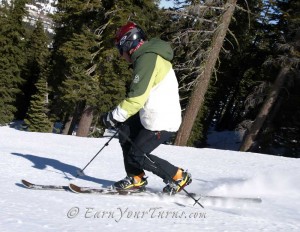
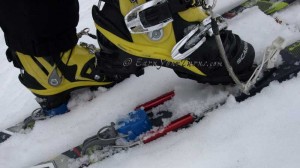
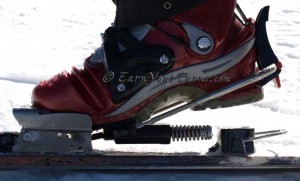
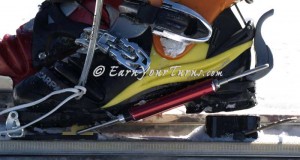
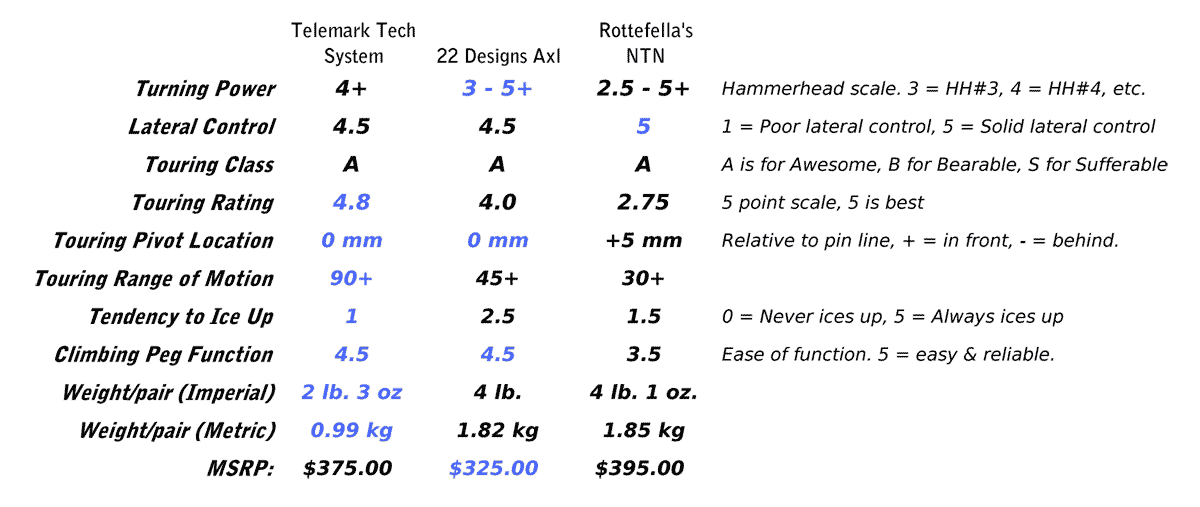
10 comments
6 pings
Skip to comment form
So no release though, eh?
Author
smellytelly, 😉
No release yet. I have had it pop out twice now while ascending, in both cases because I forgot to lock out the release as is recommended.
Safety release? It is theoretically there, but not like NTN or 7tm. For my purposes, it has worked as preferred…no release except catastrophic release. So far – knock on wood – not necessary.
Thanks for encouraging the development of TTS. It’s a logical direction for the sport. With engineering refinement will come weight loss and hopefully a binding under 2 pounds which would be fantastic. If you start engineering “releasibility” into a TTS system, it would quickly gain weight from tinkering chaos.
“TTS tours like a dream, NTN like a tank.” 🙂
Author
I wouldn’t hold my breath for a pair clocking in at less than 2 lbs./pair. Two and a quarter pounds per pair is pretty darn good in any telemarkers book.
I am using rottefella cables with my setup, which weigh more but work better for my sz 29.0 TX boot. Currently mounted on G3 Zenxides, very sweet setup. Heel height is an issue, plan on switching to a G3 heel.
Craig,
Thank you for the thorough and detailed review of the Telemark Tech System binding. No need to wait for a 2 lb. binding, our machined aluminum race toes drop the weight down to 32.6 oz (924g)/pair (29.8 oz/845g when mounted flat on the ski).
For a range of motion the TTS system and a fully flexed boot allows me to drive my knee to about 4″-5″ from the ski, which is plenty low for any skiing I do. So far the 9 hole mounting pattern has enough holding strength that we have not had any bindings pullout.
Nearly cuts binding weight in half versus Axl. Amazing. I’ve been so impressed with the Axl and only recently discovered the TTS. My first impression of TTS was essentially one of bewilderment. No more. Craig, you’ve done your homework on this one, as expected, and I must say the future of this type of binding looks quite bright. Thanks for the test reports.
Hey Dostie, do you think Mark would cut loose with the newest iteration and perhaps give an interview about the future of TTS??
It’d make a nice article 🙂
He will, when he’s good and ready. What is the future of TTS? It is the future of tele. IMNSHO. 😉
Yes this is the time to do it. I’m looking at a new set up this year and I’m sure others are too. I’m super curious on how his latest toes are different from the Dynafit toes and why they would be better and which may be burlier for tougher conditions and no-falls skiing.
[…] Review: Verdict on Telemark Tech System Somewhere around 35° to 40° of heel lift the cable simply says no more. At which point to drive the knee any further forward means the cuff must provide the rest of the motion, and/or the ski must bend at the tip more. […]
[…] Earn Your Turns Verdict on the TTS […]
[…] […]
[…] sports some degree of safety release (allowing skis to come off in the event of an avalanche). The Telemark Tech System promises to meet these requirements. The Mantis binding was designed as a home project to take the […]
[…] 2014 Related Posts Verdict on TTS Dynafit goes Bisensual Review of TTS v2.0 BCTalk Thread: TTS strengths, weaknesses, […]
[…] is about 60mm behind the toe pins, which is approximately the same as the forward position of a TTS […]